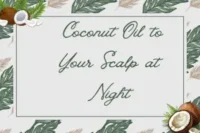African American Hair Care – A Complete Guide | Hair Care Tips for African American Hair
Published: 16 Mar 2025
African American hair is naturally curly, coily, and more prone to dryness than other hair types. Because of their unique structure, natural scalp oils have a harder time reaching the ends, leading to moisture loss. This makes hydration and proper care essential. This guide will explore the best hair care tips for African American hair to keep it healthy, strong, and beautiful.
1. Why Is African American Hair Unique?

The Science Behind African American Hair
African American hair is characterized by tight curls, coils, or kinks. This structure makes it more prone to dryness because the natural oils produced by the scalp struggle to travel down the hair shaft. Understanding your hair’s porosity (its ability to absorb and retain moisture) is crucial for selecting the right products and routines.
Common Challenges for African American Hair
Dryness: Curly hair loses moisture faster than straight hair, making hydration a top priority.
- Breakage: Over-manipulation and lack of moisture can lead to hair breakage.
- Scalp Issues: Dry scalp, dandruff, and product buildup are common concerns that require attention.
2. Daily and Weekly Hair Care Routine
Daily Hair Care Tips
- Moisturize Regularly: Use the LOC (Liquid, Oil, Cream) or LCO (Liquid, Cream, Oil) method to lock in moisture.
- Incorporate Natural Oils: Coconut oil, castor oil, and jojoba oil are excellent for sealing in hydration.
- Detangle Gently: Use a wide-tooth comb or your fingers to prevent breakage.
Weekly Hair Care Routine
- Wash Wisely: Shampoo once a week and consider co-washing (using conditioner instead of shampoo) mid-week if needed.
- Deep Condition: Apply a moisturizing deep conditioner weekly to strengthen and nourish your hair.
- Scalp Massage: Use natural oils to massage your scalp, promoting blood circulation and hair growth.
💡 Pro Tip: If you’re short on time, a quick daily routine could include misting your hair with water, applying a leave-in conditioner, and sealing it with oil.
3. Protective and Low-Manipulation Hairstyles
Best Protective Styles
Braids, twists, wigs, and weaves are excellent for protecting your hair from daily wear and tear. However, ensure these styles aren’t too tight to avoid stress on your scalp and edges.
Low-Manipulation Styles
- Wash-and-Go: Perfect for minimal styling.
- Twist-Outs and Braid-Outs: Great for defined curls without daily manipulation.
- Buns and Puffs: Simple styles that reduce breakage.
💡 Tip: Avoid tight ponytails or braids that pull on your edges, as they can lead to hair loss over time.
4. Choosing the Right Hair Products

Ingredients to Look For
- Natural butter and oils like shea butter, aloe vera, and coconut oil.
- Moisturizing agents such as glycerin and honey.
Ingredients to Avoid
- Sulfates: Strip natural oils from your hair.
- Parabens and Mineral Oil: Can cause buildup and dryness.
Conclusion
In this article, we’ve explored essential hair care tips for African American hair. Healthy hair isn’t about expensive products—it’s about understanding your hair’s unique needs and treating it with care. Focus on moisture, use the right products, and adopt protective styles to maintain your hair’s health and beauty.
💬 Your Turn: What’s one hair care change you’ll make starting today? Share your thoughts below!
FAQs About African American Hair Care
It depends on your hair type and lifestyle. Washing once a week or every two weeks helps prevent dryness while keeping your scalp clean. Co-washing can help maintain moisture between washes.
Use the LOC method—apply a Liquid (water or leave-in conditioner), Oil, and Cream to lock in moisture. Avoid heavy products that cause buildup.
Breakage occurs when hair is dry, weak, or handled roughly. Keep it moisturized, avoid tight hairstyles, and detangle gently with a wide-tooth comb.
Natural oils like coconut oil, castor oil, jojoba oil, and argan oil are excellent for moisture and scalp health.
Focus on scalp health, moisture, and protective styling. Avoid excessive heat, trim split ends, and massage your scalp with oils like peppermint or rosemary.
Use light oils like tea tree or peppermint to soothe your scalp. Wash regularly with a sulfate-free shampoo to remove buildup.
Yes, but sparingly. Always use a heat protectant and limit heat styling to once a week or less.
Braids, twists, wigs, and sew-ins are great options. Ensure they aren’t too tight and moisturize your hair underneath.
Avoid sulfates, parabens, and mineral oils. Opt for products with natural oils, shea butter, and aloe vera
Use a satin or silk bonnet, scarf, or pillowcase to prevent dryness and breakage.

- Be Respectful
- Stay Relevant
- Stay Positive
- True Feedback
- Encourage Discussion
- Avoid Spamming
- No Fake News
- Don't Copy-Paste
- No Personal Attacks



- Be Respectful
- Stay Relevant
- Stay Positive
- True Feedback
- Encourage Discussion
- Avoid Spamming
- No Fake News
- Don't Copy-Paste
- No Personal Attacks





